Do Bees Sting In Cold Weather? Just How Bad Are They?
Looking after your honeybees over the winter can be a painful endeavour. Your bees will not find your curiosity very welcome when inspecting your bees in the winter.
Do bees sting in cold weather? Most experienced beekeepers will tell you that receiving a bee sting in the winter is far worse than in the summer. That winter bees are far more aggressive and grumpier than their summer siblings. These stings hurt a lot more and tend to contain more potent venom.
Inspecting a beehive in the winter is not recommended, especially in more northern climates. You can inspect your honeybees in more southern climates but there are several factors you should consider.
Are Winter Bees Stings More Painful
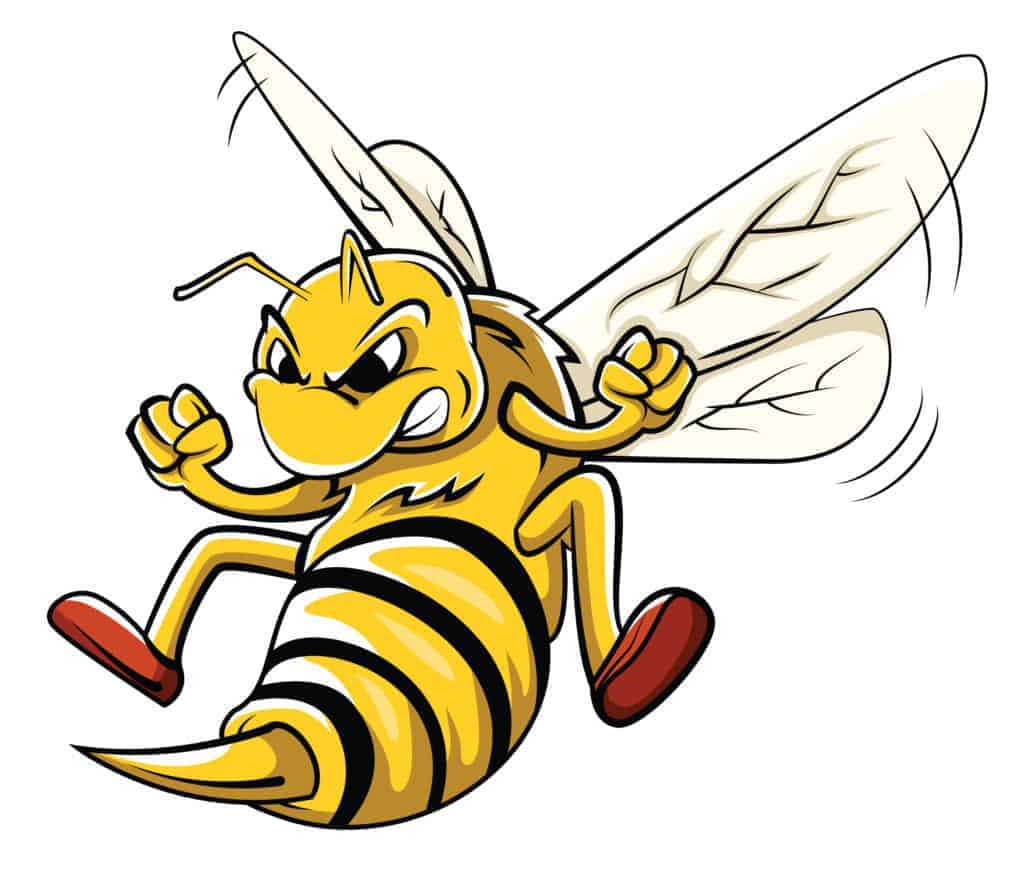
Honeybees are one of the few bees that don’t hibernate in the winter. They stay sheltered in their hive until spring. Experienced beekeepers have shared their experiences in dealing with winter bees and most agree that their stings are far more painful than spring or summer bees.
Winter bees are more aggressive because they are trying to keep their hive warm and any disturbance to the colony makes them very grumpy. In fact, its recommended to never open a hive during the winter.
If you do this in northern climates you will kill the colony. You can check on your bees in more southern climates but be careful.
If the temperature is below 55 degrees Fahrenheit bees can no longer fly and become very sluggish. If their body temperature drops below 41 degrees Fahrenheit, they will die.
To stay warm in their hive bees will begin to cluster when the air temperatures drops below 50 degrees Fahrenheit. They vibrate their abdomen and flex their wing muscles to generate heat. Honeybees can heat their body up to 111 degrees Fahrenheit.
They generate a lot of heat in the winter but it requires a lot of energy. This is the reason they require so much honey to survive the winter.
How Do You Winterize Bees
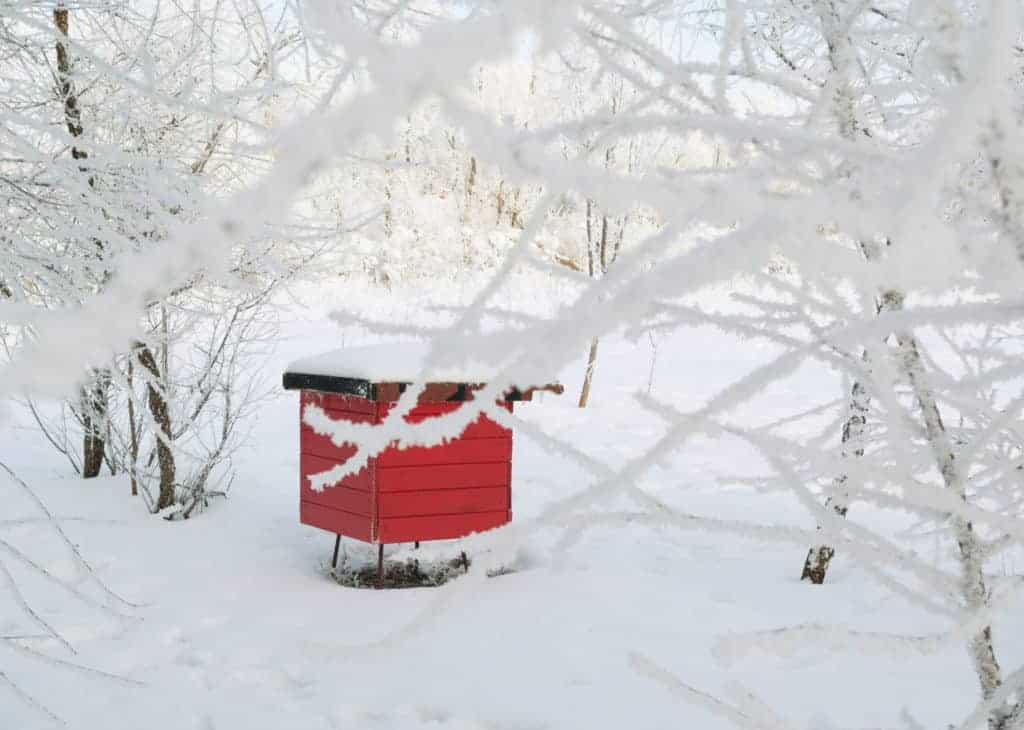
The majority of bee colonies are lost over the winter months. The common causes of death are starvation, the cold, pests or disease. Here is a quick overview on how to best winterize your bees.
1. Feed syrup or winter patties in the fall – you can use a 2:1 mix, 2 parts granulated sugar to one-part water to create your own syrup. Or you can purchase winter patties or even use fondant to feed your bees.
You should start feeding after the honey supers have been removed. Keep an eye out for robbing activity from wasps and other hives. Also put the entrance reducer down the smallest opening and stop feeding syrup once you wrap the hive.
2. Leave enough honey in the hive – bees eat a ton of honey in the winter, especially in colder regions. A typical hive in northern climates will require 80-90 lbs of honey to survive winter. Its always better to err on the side of caution and give them too much honey.
Also, don’t forget to remove the queen excluder, you don’t want your poor queen unable to access the warmth of the clustered bees.
3. Wrap your hive – in colder regions you will need to wrap your hives otherwise move them to a warmer building for the winter. Wrapping your hives allows the bees to expend less energy to stay warm and consume less honey.
There will be less condensation in the hive and your bees will be much drier. Also warmer clusters of bees can move easier to access their honey stores.
4. Keep Hive Ventilated – without proper ventilation in the winter your bees could get Nosema, a fungal disease which thrives in wet and cold winter hives. A well ventilated and wrapped hive will prevent Nosema. You need one ventilation gap at the top and bottom to create good cross ventilation.
5. Entrance Reducer – once late summer or early falls arrives, narrow the entrance reducer to the smallest setting and leave it that way for the winter.
6. Protect the hive against mice – install a mouse guard in the fall to allow bees to go in and out but this will keep mice from entering the hive. They’re looking for a nice warm place for the winter too.
7. Control Varroa mites – make sure to test and treat for mites before the winter. It is not uncommon for mites to kill a whole colony during the winter.
How Much Honey Do Bees Need To Survive Winter
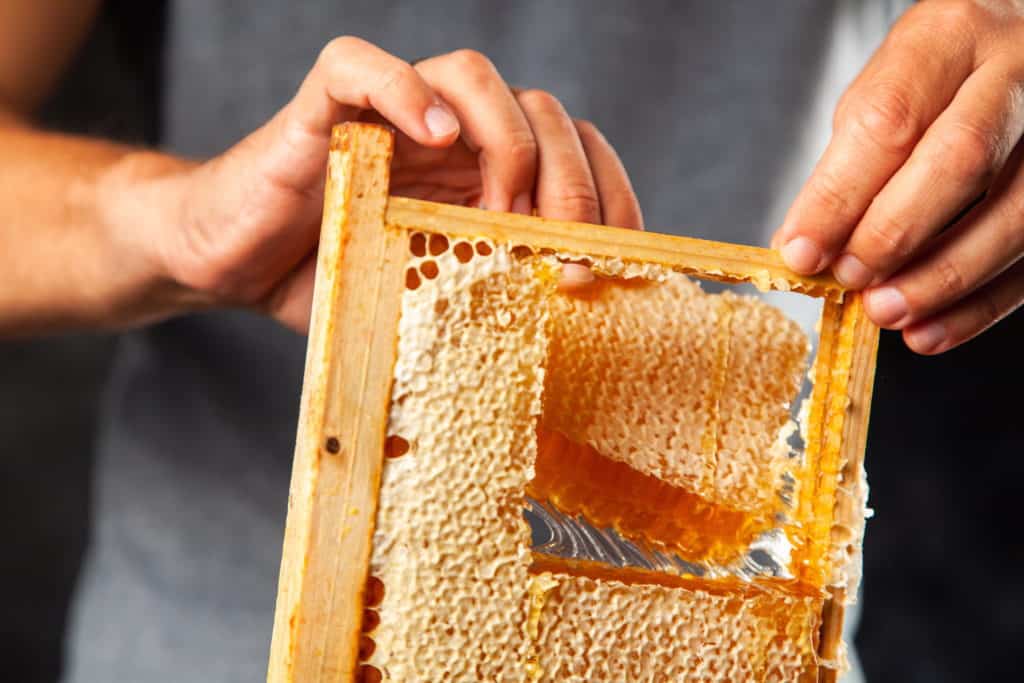
The amount of honey your bees require to survive the winter will depend on the severity of your local climate. See the chart below for common amounts of honey required.
| Climate | How Much Honey |
|---|---|
| Northern Climate | 80 to 90 lbs |
| Central Climate | 50 to 60 lbs |
| Southern Climate | 30 to 40 lbs |
If your unsure how much honey to leave in your hives, consult your local beekeepers and association and they will give you a more accurate estimate.
If you don’t think your hive will gather enough food for the winter you should consider supplemental feeding them. Some common types are:
- Sugar water or heavy syrup.
- BeesVita Plus – it’s a supplement full of nutrients for bees.
- Candy board – another way to provide sugar to your bees, they are easy to make and there is countless recipes online.
- Winter patties – these are great for bees that are clustering, just place the winter patty on the top of the frames and the bees can eat it without moving to far.
And for more detailed information about winterizing your bees, hold up for a bit, I wrote an article all about how much honey bees need to survive winter that I encourage you to read!
How Do You Vent A Beehive For Winter
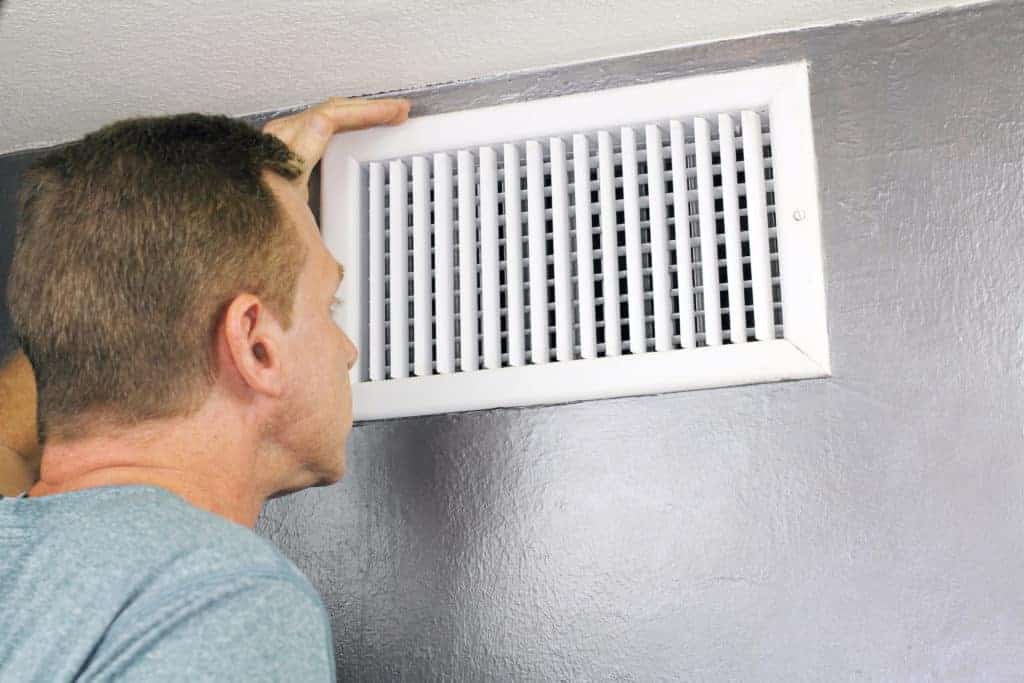
During the winter your colony maintains heat by clustering close together. The bees create warm moist air that rises to the top of the hive and this can create a lot of condensation.
Without proper ventilation that warm air will reach the top of a cold inner cover, condense, and create moisture dripped back down on the bees. If this happens your bees will not survive the winter.
In cold climates your colony should be 3 deep hive bodies with most of the honey toward the top with any holes in the bottom boxes closed
To proper ventilate your hives, drill a 1/2-inch hole in the front of the upper deep below the handle. You will see many beekeepers recommend a 3/8-inch hole, but sometimes the bees get stuck in a hole that size.
You can just leave the entrance reducer set to the smallest opening at the bottom of the hive and this will help create good ventilation.
Some beekeepers prefer to use screened bottom boards, even in the cold white north, just make sure there is a good windbreak around the bottom of hives until the snow covers it. This will allow for proper ventilation from the bottom.
If your wrapping your hives don’t forget to cut a hole in the cover to allow the venting at the top. Also, you can add a little landing board below the top hole to make it easier for your bees.
Finally, you will need a moisture board for the top of your inner cover. This will absorb any moisture created by the hive, but this needs to be a porous material. Some beekeepers will install their own absorption blanket and use wood shavings, newspaper or dry pine needles as a filler.
Another popular option, but can be a bit expensive, is to purchase a hot box moisture board. This will separate the inside warm air from the cold air outside and reduce condensation.
It’s basically an attic for your beehive. They do work very well in northern climates and usually come with insulation. But they are approximately $53 US for a 10-frame box.
I recommend speaking with your local beekeepers and association to find out what is working for them. This will save you a lot of money, time, and most importantly fewer dead colonies.
Related Questions
How Do You Know If Bees Are Alive In The Winter? If its 50 degrees Fahrenheit and no wind you can lift the cover and take a quick peek. You can also tap on the side of the hive and listen for the singing. If you don’t hear anything then your bees are probably dead.
But, if there is a lot of background noise near your hives and you can’t clearly hear your bees, then use an infrared thermometer or even a stethoscope to listen for them. Do not open the cover in cold climates or you will kill the whole colony.
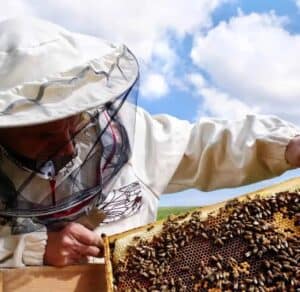
Joseph Davis
My goal is to show that anyone can take up beekeeping and it can be a very rewarding hobby. I strive to share my experiences and answer any questions you may have.
